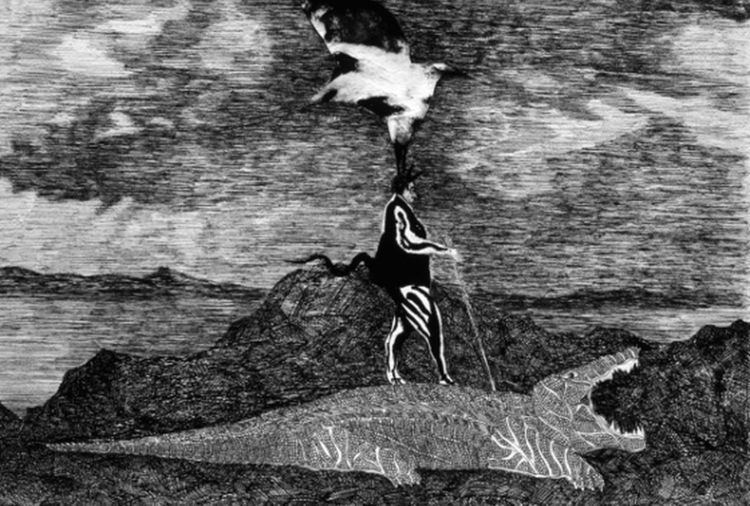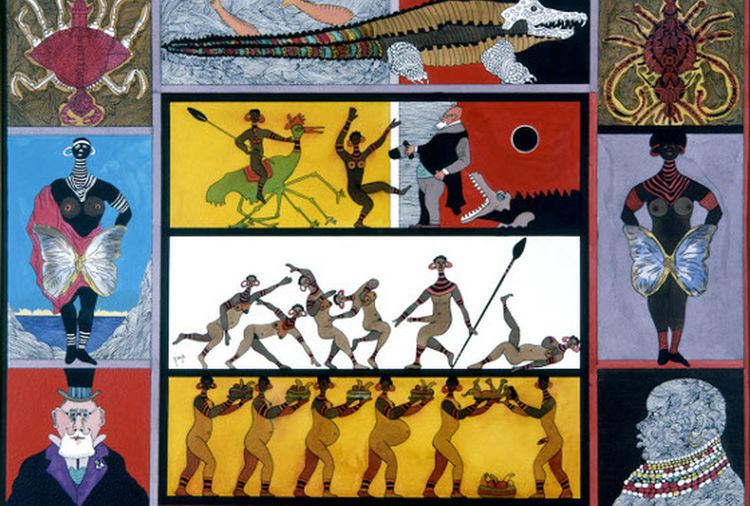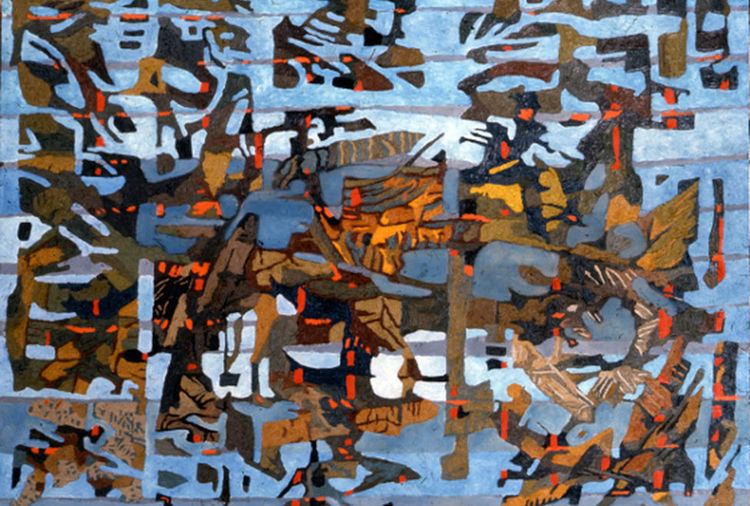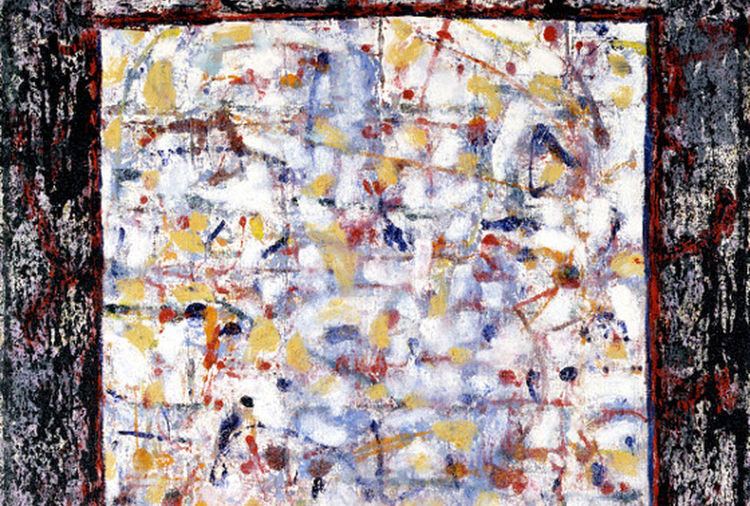Name Francisco Icaza | ||
 | ||
Died May 3, 2014, Mexico City, Mexico | ||
INAUGURACION PINTURA "ÓLEOS DE FRANCISCO ICAZA"
Francisco Icaza (5 October 1930 – 3 May 2014) was a Mexican artist best known for his drawings about his traveling chronics, and his oil paintings. He spent much of his life living and visiting various countries in the world. He began painting as a child at the refugee against the bombs in the Mexican embassy in Germany during the rise of nazism, he painted as a posture against the war. Icaza exhibited his work both in Mexico and abroad in Europe, South America, Middle East, Asia and India, standing out his three major individual exhibitions at the Museo de Arte Moderno at México city. He also painted a mural dedicated to Bertolt Brecht: La Farándula, at the Casino de la Selva in Cuernavaca, a focus of controversy when the work was moved and restored in the early 2000s. He painted other murals for the Mexican Pavilion at Hemisfair in Houston Texas: Urban Flowers, for the Mexican Pavilion at Montreal Canada: Canto al Barroco Maya; and, for the Pavilion of México in Osaka: Repressive Computers, this mural is protected at the Abstract Museum Manuel Felguerez in Zacatecas, Zacatecas, and is part of the other murals of Osaka considered as a human patrimony. He was an active member of the Salón de la Plástica Mexicana, and also member and founder of the important artistic movements : Interiorists, Independent Saloon, and Confrontation 66.
Contents
- INAUGURACION PINTURA LEOS DE FRANCISCO ICAZA
- Francisco icaza a simple tribute
- Early life
- Career
- Death
- Artistry
- References

Francisco icaza a simple tribute
Early life

Icaza was born in the Mexican embassy in San Salvador on 5 October 1930, the son of a well known diplomat. Much of his childhood was spent in Germany with the rise of the Nazis. As he spent much time alone as a child, he began painting. His youth was very nomadic living in and visiting countries in Europe, Asia, the Middle East and America.

A stay in Madrid gave him experience with the works of European masters, but it was after a year of studying political science at the Lovaina University that he decided to study painting at the Brussels Academy of Fine Arts. In 1951, he moved to New York invited by the Mexican painter Rufino Tamayo, he studied with him the art of painting; and also in New York, graduated himself as a photography director for Television Later, he keep on studyng the art of painting under Antonio Rodríguez Luna in Mexico, city.

Icaza himself recognized the impact that his nomadic upbringing and the war had on his personality. As a youth, he was diagnosed with Babel syndrome, a type of neurosis defined by Swiss psychologist Claude Piron. In 1951, he had his first depressive crisis which led him to decide to move to his native country of Mexico. By 1953, he had developed a daily habit of painting for therapeutic purposes and to deal with his solitude.

The artist spoke multiple languages and was a devout reader of Albert Camus. He was a friend of Ray Bradbury and Aldous Huxley and admirer of José Clemente Orozco, all of whom affected his work, as well as his political ideas, which were strongly socialist and did not changed over his life. He was well versed in contemporary and past art tendencies, and also had ample knowledge of ancient cultures and literatures of various countries and epochs. The artist stated he was fascinated by codices and other historical works that take advantage of signs and images to convey their meaning.

From the 1950s to 1968 he remained in Mexico, but the political turmoil after the Tlatelolco massacre caused him to leave Mexico again, not returning to remain until 1990. During that time he lived or spent time in United States, Guatemala, Colombia, Spain and United Kingdom.
In the early 2000s he was involved in a controversy related to his mural done at the Casino de la Selva in Cuernavaca. In 2001, the Costco group bought the former casino to build new facilities, a move Icaza questioned the validity of. He protested the sale and the plan to restore his and other murals. The project went ahead, but the artists were not permitted to see the restoration work. After the murals were shown to the public in their new location in 2004, the artists denounced the works as copies or fakes, claiming the originals were destroyed. He was married to Tony Marcín for 24 years and lived in Mexico.
Career
He began his career in 1947 with his first teacher, an Armenian painter - refugee from the war- at the Mediterranean coast in Lebanon, where he swear before the Olympic gods, that the rest of his life he will be painting. Later, with Arnold Belkin founded a group of artists called Los Interioristas or Nueva Presencia. In 1968 he formed the Salón Independiente along with Vicente Rojo Almazán and Manuel Felguérez.
He also painted a mural at the Casino de la Selva, for the theater that the republican Felix Candela built, dedicated to Bertolt Brecht: La Farándula, an apology for the world of clowns and actors, inspired in the Opera of Three Cents. Another murals are: Computadoras Represoras, for the Mexican Pavilion at Osaka, Japan; Canto al Barroco Maya, for the Mexican Pavilion at Montreal Canadá; and Urban Flowers for the Mexican Pavilion at Hemisfair in Houston, Texas. He also has a monumental sculpture dedicated to the muralist painter José Clemente Orozco. He was a prolific easel oil painting and a prolific drawer with ink, gouache and water color; he had also worked at author books: La Fiera Malvada; Historia de una Mano Juguetona; Viaje Erótico; Sancho escuchando las lecturas del Quijote; Me quiero ir al Mar, and Llegando a puerto en sentido contrario.
Icaza rejected the commercialization of art but admitted that an artist needs to live from his work, taking advantage of different opportunities. Despite his strong criticism of the Mexican government during his life, he has felt no contradiction in taking grants from it as he says that the arts of a country, are always their best things to show to the world, and he is part of that. These have included a position as a cultural attaché for the Mexican embassy in Colombia . In 1993, he received a special grant from CONACULTA to return to Mexico and paint in oils full-time, after he had been working in his drawings that express his wishes to leave by the Sea.
Icaza's work has been exhibited in various venues in Mexico and abroad. His major exhibitions include the Museo de Arte Moderno (1979, 1981 and 1998), the Phoenix Art Museum and the Museum of Contemporary Art San Diego . In 2011, he had an exhibition at the Galería Machado in Mexico City, sponsored by CONACULTA. The Museo de Arte Moderno holds several of Icaza's works.
Icaza was a member of the Salón de la Plástica Mexicana, active member of Salón Independiente and the movement Confrontación 66.
Death
Icaza died at the age of 83 in Mexico City on the afternoon of 3 May 2014.
Artistry
Icaza has been classified as part of the Generación de la Ruptura, the art movement that followed Mexican muralism. He had social content in his work, that reflected his socialist ideals, much like the muralists; however his painting was not a communication with the masses.
He experimented with a wide range of themes and techniques. His production had marked periods, from neo figuration to criticism and from there to works that recall the ancient cultures as humorous and satirical recurrences. Following the line of the Interiorists, he painted self-portraits revelatory of his own state of mind. He produced a series of oil paintings and drawings of prostitutes and the Lumpenproletariat that shows influence from German Expressionism and symbolist painter James Ensor . The artist states that while he has changed styles and techniques, elements of expressionism remain constant in his work, stating “When I draw I try to transmit my obsessions as a thinking being, as a vital part of the 20th century; my usual themes are life and death.”
Icaza produced gouaches, engravings and drawings conceived in book form such as La fiera malvada, Animales míticos, Breve historia de una mano juguetona, El viaje erótico, Sancho escuchando la lectura del Quijote, Me quiero ir al Mar and Llegando a puerto en sentido contrario. The images here were not conceived as illustrations for texts rather he invented arguments and used a language of ideographs with have a similarity to symbolism and surrealism.
